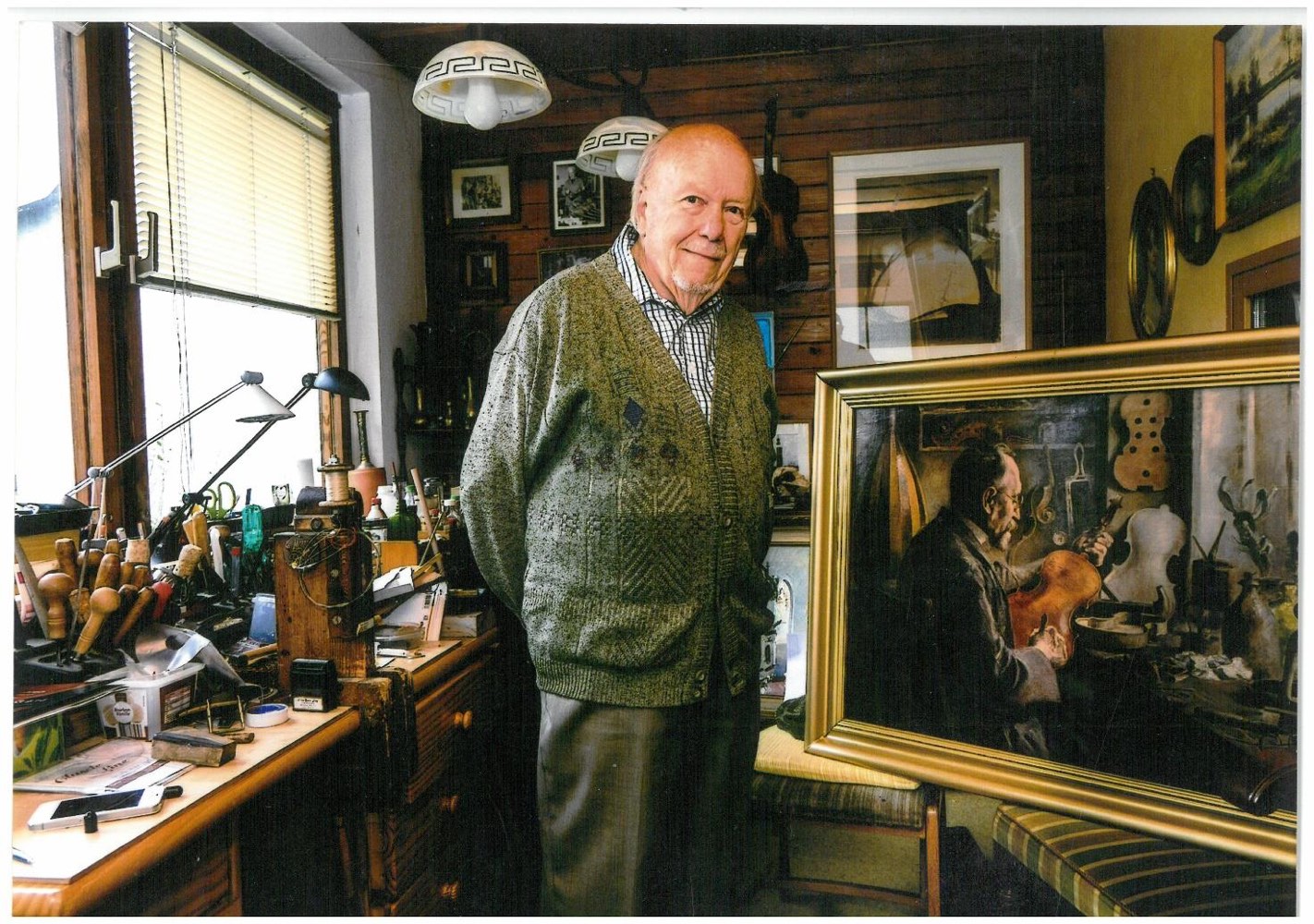Otto Möckel is without a doubt the most famous name in Berlin’s over 400-year history of violin making. His fame is well-deserved and his finely crafted instruments are still very popular today with professional musicians. Möckel was also one of the first violin makers ever to write instructional books about how to make violins.*
Möckel was very prolific. Between 1906 and 1937 he built 540 stringed instruments. If we include the instruments he made while working for his father, Oswald Möckel, between 1882 and 1888, and again from 1891 to 1905, and those he made under Richard Brückner in London from 1889 to 1890, this number rises to more than 600. It is a privilege to have the chance to study a maker’s final instrument such as this violin made by Möckel in 1936. Möckel’s health deteriorated during that year and he died on January 23, 1937. This violin, like others he made at that time, was completed together with his assistant Curt Jung.

Möckel’s label reads 1936 when the violin was begun but it is branded 1937 when it was finished. The other brands on the interior include the maker’s initials embedded in a maple leaf design and two double digit numbers, 18 and a 19. These numbers relate to the quarter-tone tuning-fork numbers with which Möckel tuned the table to the back. The first fundamental tone, the note C was equal to “1” and the standardized concert pitch of A (435Hz) was equal to “19”. The tuning fork number 18 represented the quarter tone between G-sharp and A and tuning fork number 19 represented the tone of A.
This violin was purchased in February 1937 by Richard Röseler, the concertmaster of the orchestra in Liegnitz, a city to the south-east of Berlin which is today a part of Poland. In 1945 Röseler fled to Bückeburg near Hanover and after the war he taught young students including members of the allied forces that were occupying Germany at the time. The violin has remained in the family ever since and is being sold by Röseler’s granddaughter.

Written three weeks after Möckel passed away, this letter from his daughter explains that this violin was the last instrument that her father made.
A letter accompanies the violin, written by Möckel’s daughter, Vally. The letter states that this violin was her father’s last instrument, that it was made on a Guarneri ‘del Gesù’ model and that it was varnished by her father’s assistant, Kurt Jung.

Möckel’s daughter Vally with her husband Fritz Tennigkeit and their daughter Renate in around 1930 (Source: the family archive of Peter M. Haas, Möckel’s great-grandson).
Vally assisted her father on his books and was often with him in his workshop. She married the Berlin painter Fritz Tennigkeit who was also an accomplished violist and played in various Berlin orchestras. Tennigkeit made several sketches and paintings of his father-in-law including a drawing from 1936 — the year in which this violin was constructed.

A portrait of Otto Möckel by his son-in-law, Fritz Tennigkeit, in the year that this violin was made.
Tennigkeit’s best known painting of Möckel is now in Berlin’s Museum of Musical Instruments and shows the violin maker in his workshop. The painting was given to Möckel by his family for his 52nd birthday and hung in a prominent place in his workshop until his death the following year. But by the time his successor, Curt Jung, took over shortly thereafter, the painting had disappeared. Jung assumed that the painting had been sold to cover Möckel’s funeral expenses.
Jung lamented the painting’s disappearance so much that he offered to build Tennigkeit a viola if he would paint the same picture again. This explains why two identical paintings of Möckel survive to this day: one hangs in the Museum of Musical Instruments and the other is the property of Klaus-Dieter Jung, Jung’s son who continues his father’s workshop today.

Klaus-Dieter Jung with the second version of the painting of Möckel in his workshop.
Wolfgang Meyer is the author of Berliner Geigenbau, the essential reference book on Berlin’s historical violinmakers. Tarisio is assisting Herr Meyer in his research for a second and third volume to be published in 2025.
* Significant publications of Otto Möckel:
- Apian-Bennewitz, Paul-Otto : The Violin, 2nd edition revised by Otto Möckel 1920
- Möckel, Otto – Journal : The Violin and Related Instruments, 1925-1929
- Möckel, Otto : The Art of Violin Making, 1930